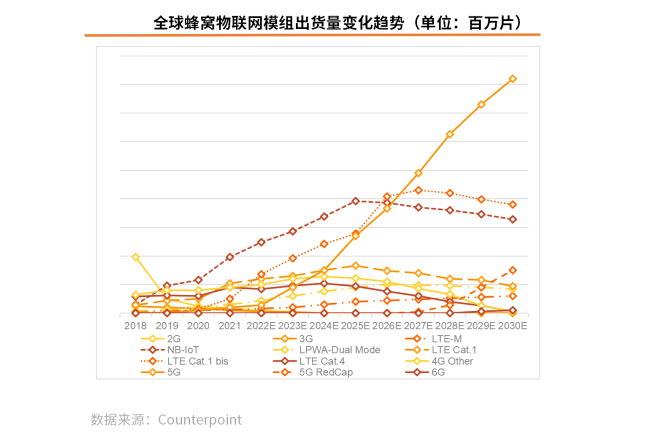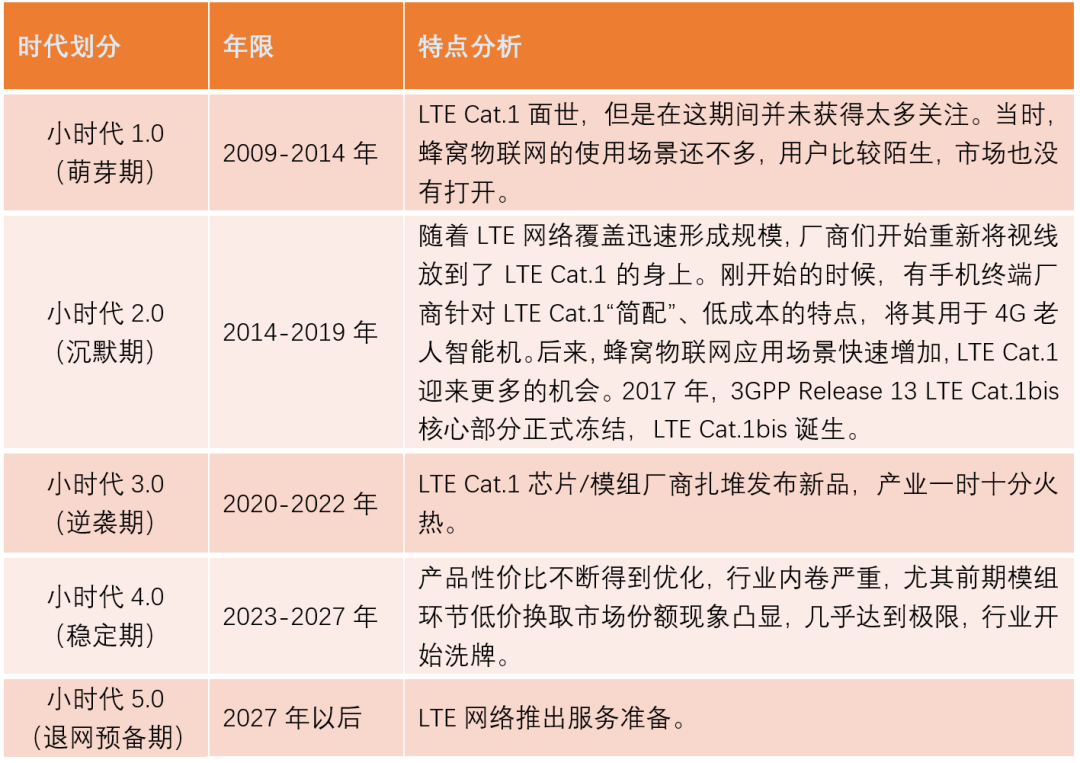In the cellular IoT market, since the module link is relatively transparent, the industry often discusses cellular IoT from the perspective of cellular modules to understand the overall market situation.
According to the latest global cellular IoT module market forecast report from market research firm Counterpoint, global cellular module shipments will exceed 1.2 billion by 2030, with a compound annual growth rate of 12%. The top three categories of growth in cellular IoT module shipments are 5G, NB-IoT and LTE Cat.1 bis modules.

As you can see from the picture above:
◉ 5G will still become the absolute main force in 2030. The shipment volume of 5G modules is the fastest growing among all standards, but the market share has been adjusted downward; the time node of 5G RedCap will be earlier, and the market share has been adjusted high;
◉ The growth rate of NB-IoT module shipments will be relatively slow in the next few years;
◉By the end of this decade, the market should see the introduction of 6G technology into the Internet of Things. However, in the first few years of adoption, 6G will be limited to high-end applications such as enterprise and broadband.
Does LTE Cat.4 work? OK!
Recently, discussions on LTE Cat.1 are inseparable from “low price” and “involution”, and there are many voices questioning LTE Cat.1. Although “low price” and “involution” are established facts, according to industry development trends, it is expected that LTE Cat.1 will still be the largest deployment of cellular IoT communication technology in a few years, and it will still be able to maintain a relatively rapid development trend. The growth rate will be above 30%. This is also the reason why the price is so high, and there are still so many manufacturers dedicating themselves to making LTE Cat.
From the perspective of the development of domestic cellular IoT, in the next 5 to 10 years, cellular IoT will be driven by technologies such as NB-IoT, LTE-Cat.1 bis, LTE Cat.4 and 5G Sub-6GHz to meet the needs from low speed to The needs of IoT application scenarios ranging from medium speed to high speed.
At present, the industry is relatively recognized that 60% of current 2G users are expected to migrate to NB-IoT, and the remaining 40% will migrate to LTE Cat.1; 3G users will completely migrate to LTE Cat.1; due to cost considerations, approximately 40% of LTE Cat.4 users will migrate to LTE Cat.1; high-speed users above LTE Cat.6 will gradually migrate to 5G Sub-6GHz networks.

For the near future, medium- and low-speed IoT services will be carried out by NB-loT and LTE Cat.1/1bis. NB-loT carries low-speed, low-power consumption, wide-coverage low-speed mobile services, and LTE Cat.1/1bis carries medium-speed, low-speed mobile services. Voice and high-speed mobile services.
For the mid-to-long term, establish a comprehensive mobile IoT ecosystem for the coordinated development of 4G and 5G. 4G will carry medium and high-speed services respectively with LTE Cat.1/1bis and LTE Cat.4, and 5G will carry NB-loT, RedCap and NR respectively. Carrying low-rate, medium-high-rate and ultra-high-rate services.
The “little era” of LTE Cat.1

Since its development in 2009, 3GPP has released Release 8, officially bringing LTE to the world. At that time, 3GPP defined a total of 5 terminal categories, namely LTE Cat.1, Cat.2, Cat.3, Cat.4, and Cat.5. According to the development rules of cellular communication technology, it takes more than ten years from the launch of a generation of technology to its final withdrawal from the network. LTE Cat.1 will naturally experience this “cycle” of iteration and iteration, and in LTE Cat.1 The “service” period can be roughly divided into several “small eras” as shown above.